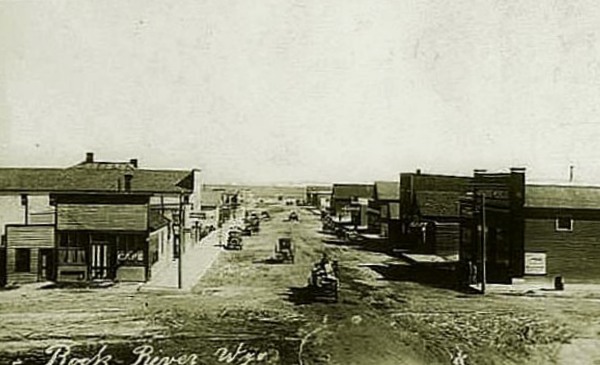
Rock River, approx. 1920
Epitomizing the growth of Rock Rver as a result of increased employment from the Railroad and growth
of the nearby oil fields were the public school and the banks.
In 1903 the school consised of a one room school house with five students. By
1913 in anticipation of growth the State Superintent reported that a new brick
school was being constructe to cost $15,000.
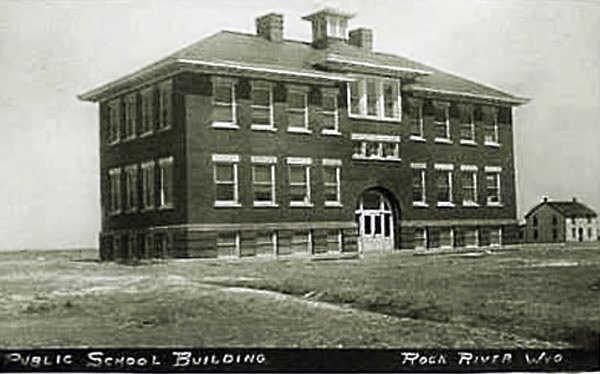
Rock River School. Photo by Leslie C. John.
Real growth in the school did not begin unil after growth hit following World War I. As late as
Superintendent of Public Instruction reported that in 1918, the school had only two teachers.
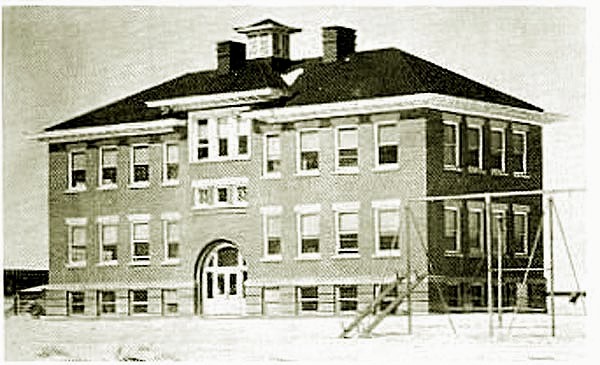
Rock River School, approx. 1931.
In 1921, a parent-teachers association was formed.
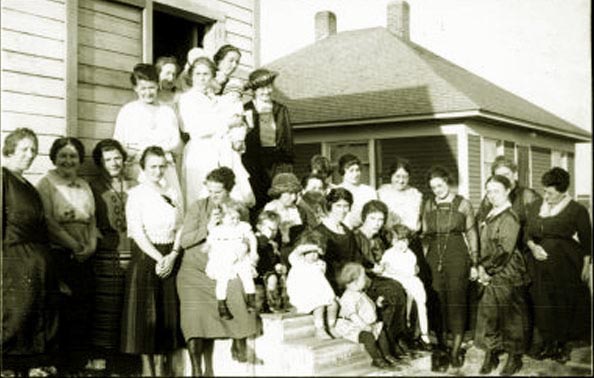
Meeting of the Parent Teachers Association at home of Mr. and Mrs. Leslie C. John.
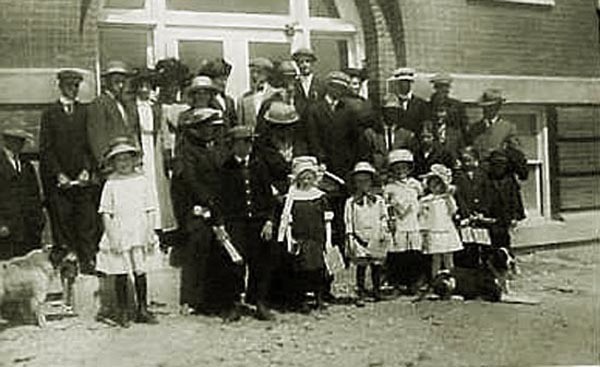
Rock River students at front steps of the new school, undated.
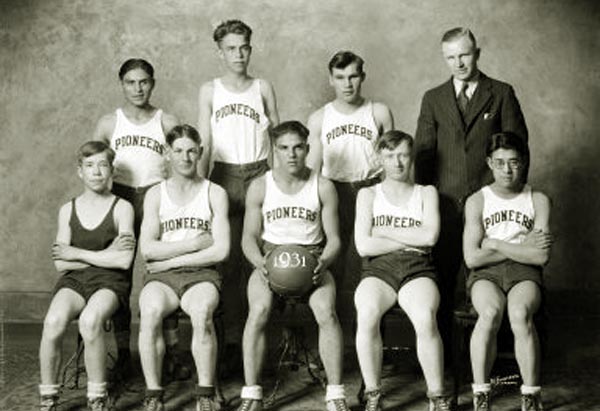
Basketball team, undated.
The coach in suit was seventh grade teacher and pincipal A. H. Anderson.
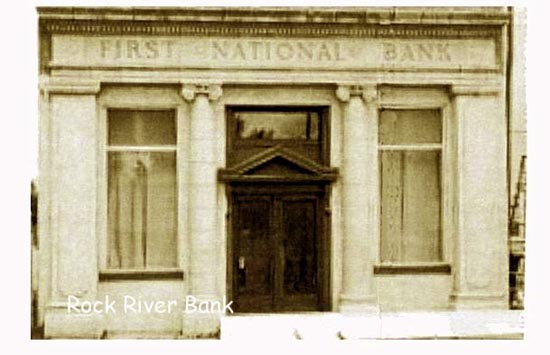
First National Bank of Rock River Building northwest corner of Avenue C and Second Street.
Unbeknownst to the Town Council, two of the banks, the First National Bank and the Rock River State Bank
were in very bad shape. The two merged. To cover shortfalls at the bank, Mayor Bishop engaged in kiting of the town's and school board's warrants, selling them to
other banks after the two governmental units had redeemed them. To cover the misappropriations of the
town's warrants, he took proceeds from the water system bonds. Addtionally, Mayor Bishop was selling notes to a bank in
Laramie without required guarantees. When the bank in Laramie complained, Bishop stalled. Additionally,
the mercantile was financially shakey. Thompson was borrowing money from his brother in Kansas to cover complaints from dissatisfied shareholders of
the mercantile. Rather than keeping the money in the bank, he allegedly kept it in a safe in his bedroom.
In April, 1923, the bank failed. In the words of Judge Percy Metz, "the town woke up, 'poorer but wiser' * * * and
found that a 'J. Rufus Wallingford' had been operating in their midst." J. Rufus Wallingford was the cenral character in a
popular series of novels by George Rudolph Chester. Wallingford was a con artist who, among other thngs, loaned persons their own money.
The Supreme Court of Wyoming, Neiderjohn v. Thompson, 38 Wyo. 28, 264 P. 699 (1928), noted, "Whenever the story told by these
brother [the Thompson Brothers] came in contact with written records, there are so many contractions in their testimony * * * the story is * * *
unreasonable * * *." The money allegely borrowed was carried around in a money belt.
A flury of lawsuits ensued. See Albany Nat. Bank of Laramie v. Dodge, 285 P. 790 (1930); Petters & Co. v. Town of
Rock River, 260 P. 674 (1927); Neiderjohn v. Thompson, 264 P. 699 (1928); Petters & Co. v. School Dist. No. 5, Albany County,
260 P. 678 (1927). Although Mayor Bishop and Thompson were the precipitating cause of the town's
embarrassment, Bishop and Thompson were not included in one of the lawsuits. Thompson had filed for
bankruptcy. The judge noted that the mayor was not included in the suit because Bishop was "insolvent and a nonresident."
Indeed, Mayor Bishop at the time was residing in the
Colorado State Penitentiary after having been convicted in federal court for misappropriation of funds.
In the 1930's, the former First National Bank building was acquired by the town which used the building for
a community center, fire station and bank. In the mid-1950, several windows on the side were removed and replaced by a garage door so as to
permit the fire tructk to be housed in the bank building.
Prior to 1920, the Lincoln Highway to Rock River was abysmal.
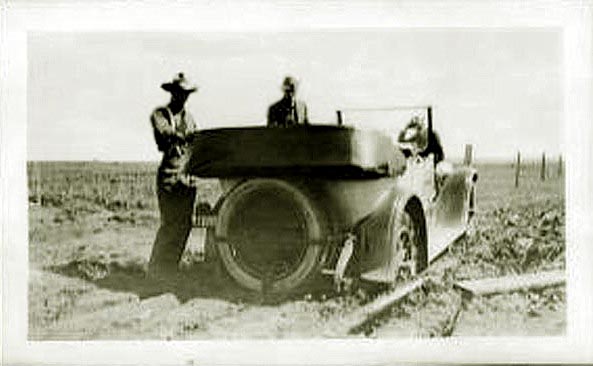
Lincoln Highway near Rock River approx. 1918.
With improvements to the Lincoln Highway and increased traffic, the town became a convenient location for services to motorists.
The Rock River Garage was a Ford agency.
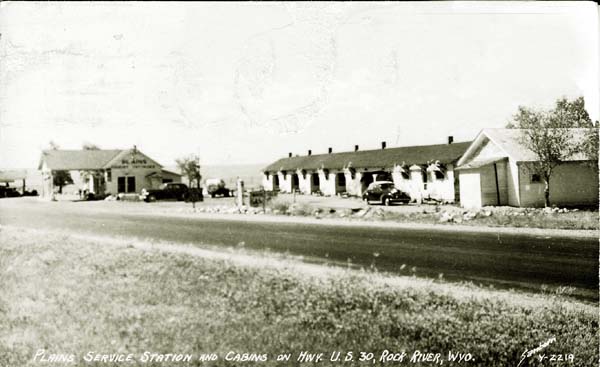
The Plains Gas Station, Rock River.

Rock River, 1940's.
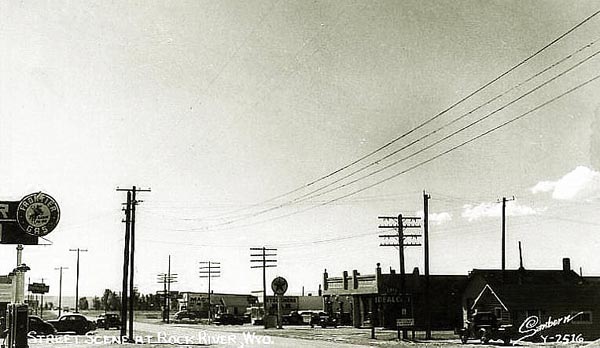
Rock River, 1940's.
In the above photo, Mac's Twenty-Four Hour Service is at the far end of the
right hand side of the photo. See Next photo.
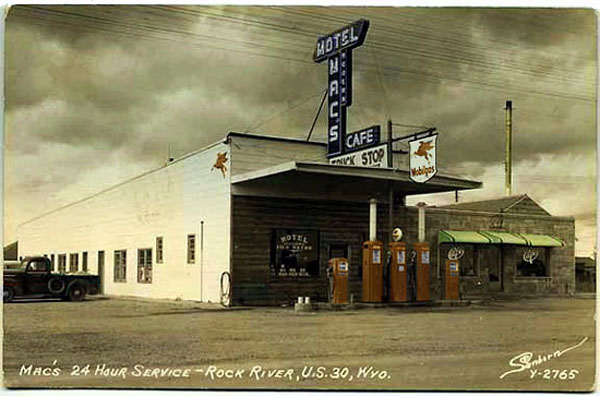
Rock River, 1940's.
Next: Rock Creek continued.
|